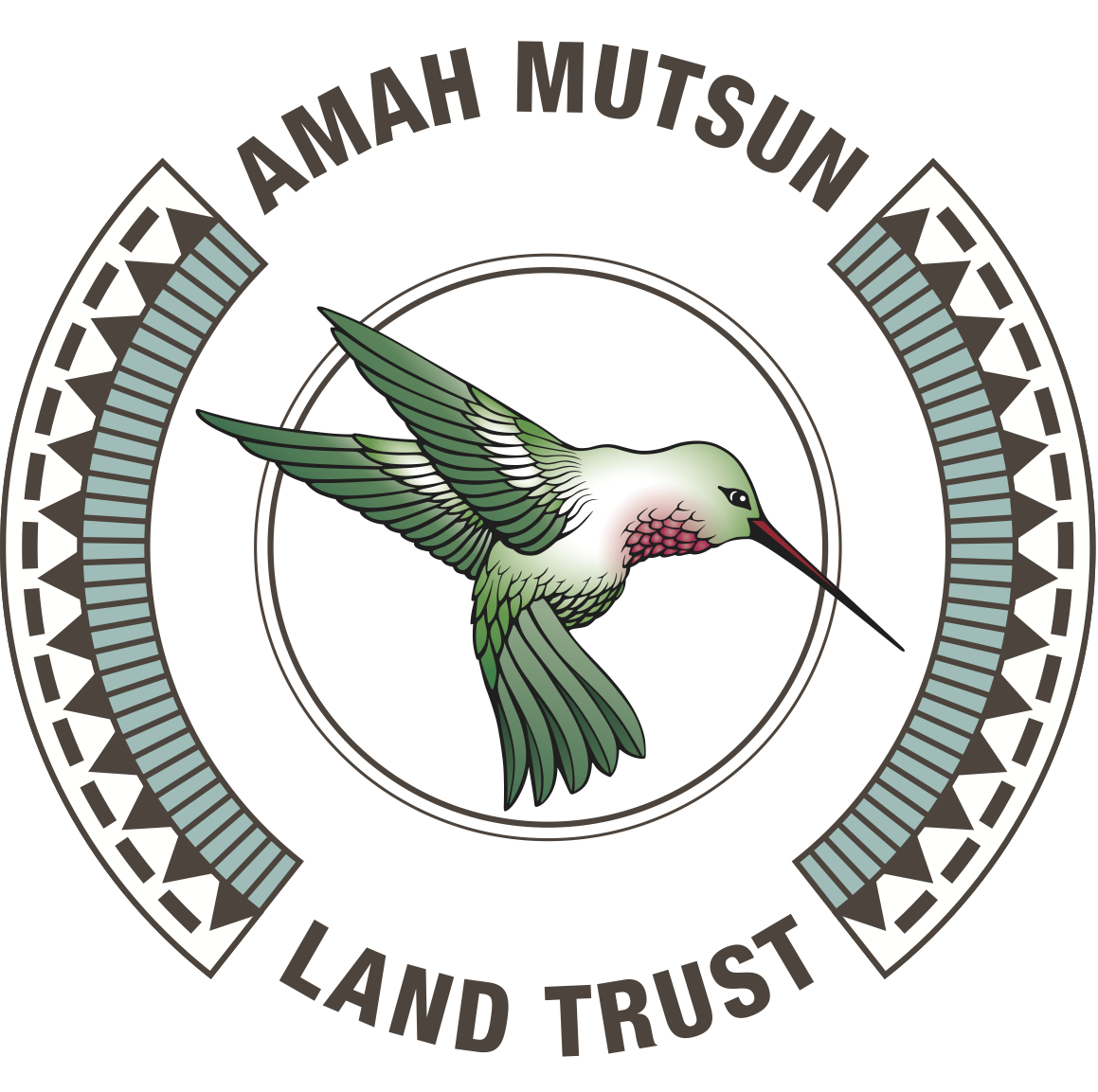Summer 2021 Newsletter
Sacred Site Protection
By Mike Grone, PhD, AMLT Research Analyst
Native Stewards Corps members and Archeological Research Staff hiking in to monitoring site. Photo by Serenity Luna.
From an academic point of view, archaeological sites are repositories of ancestral knowledge which hold key information about people’s relationships with their environment through time. For over a decade, the Amah Mutsun Tribal Band have been leaders in tribal-led archaeological research to address important questions for the revitalization of ancient traditional knowledge systems. Much of the information discovered through these efforts have affirmed traditional ways of stewarding the land and sea and provided guidance for many of the Amah Mutsun Land Trust’s projects and programs. This access to ancestral knowledge is especially useful for projects which aim to restore traditional stewardship practices to Mutsun and Awaswas territories. However, archaeological data are sensitive, and once they are disturbed from their original context they lose much of their interpretive value. The sensitive nature of these resources and their importance to the Tribe requires protection and stewardship.
Native Stewards Corps members and Archeological Research Staff working at monitoring site. Photo by Serenity Luna.
In addition to being leaders in applied archaeological research, Amah Mutsun Land Trust also oversees the protection of Sacred Sites through their Native American Monitoring Program. Started in the summer of 2020, this program trains and employs Tribal members to serve as Native Monitors on construction projects in order to oversee the protection of culturally significant resources that may otherwise be negatively impacted by development. In this role, Native Monitors serve as liaisons between multiple agencies and hold the responsibility to ensure that culturally significant sites and human remains are treated with dignity and that the laws which protect them are upheld. This can mean making the decision to halt work when sensitive cultural materials are encountered, communicating effectively with all parties involved, and taking the appropriate steps to protect these resources.
Staff burning sage and other sacred plant medicine before starting work at monitoring site. Photo by Serenity Luna
In order to make these critical decisions, AMLT’s Native Monitors undergo training workshops and certification with professional archaeologists. These trainings cover the fundamentals of archaeological theory, methods, and practice, along with additional training in human osteology, laws and regulations surrounding cultural resources, and on-site responsibilities of working as a Native Monitor. The most important part of the training, however, is to share and emphasize the traditional and cultural teachings and significance of protecting Mother Earth and the ones who walked this earth before us who cannot speak for themselves. This is the obligation to Creator that the Native Monitor must uphold. AMLT provides these training workshops free of cost to Tribal members and aims to conduct them annually, with the next scheduled workshop coming up on June 26th. After receiving the training and completing the certification assessment, certified Monitors are eligible to work on jobs contracted through AMLT and are notified of work opportunities as they arise.
Over the past year, several Tribe members have served as Native Monitors on a wide variety of development projects in Amah Mutsun Tribal Band territory, including dam removals, reservoir and highway expansions, coastal pump stations, and commercial and residential construction. Their presence and diligent attention has helped to minimize the disturbance and destruction of sensitive cultural materials at these work sites, holding developers accountable and providing crucial Native insight into sacred site protection.
As leaders in Indigenous archaeology, AMLT aims to expand this program by training and certifying more Tribal members as Native Monitors, creating flexible employment opportunities and contributing to essential efforts of site protection and monitoring. We encourage any and all interested Tribal members to participate in these trainings for the increased protection and stewardship of Mother Earth.
Large oak tree located at archeological monitoring site. Photo by Serenity Luna.




